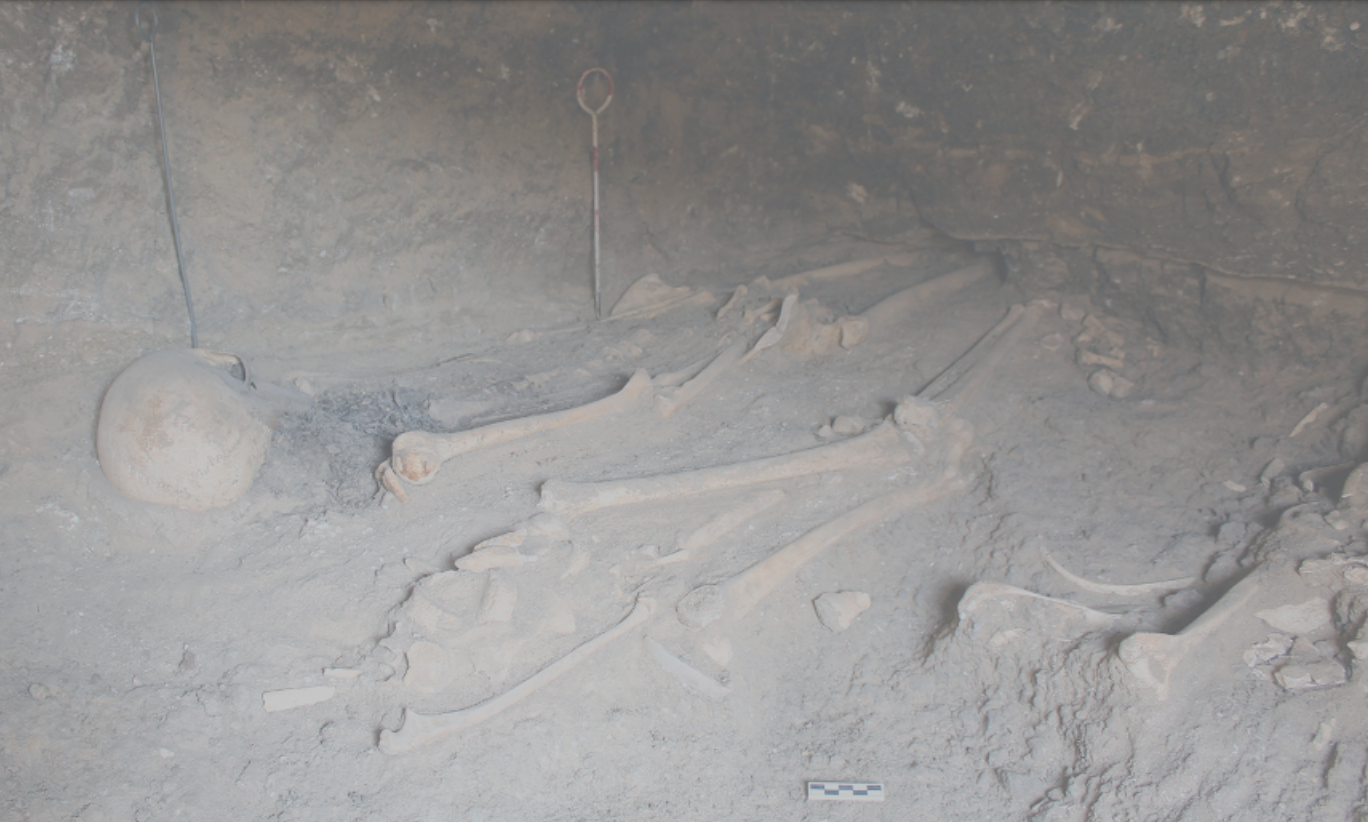A tumor with teeth has been discovered in the pelvis of an ancient Egyptian woman who died over 3,300 years ago. The strange mass is an example of a teratoma, a rare type of tumor that can grow different types of tissue such as bone, teeth, muscle, and hair.
The remains of the young woman, no older than 21 when she died, were discovered at the North Desert Cemetery in Amarna, along the River Nile. Although this wasn’t a cemetery for the elites, she was buried alongside a surprisingly valuable collection of goods, including a necklace with dozens of hollow drop-shaped pendants and a gold ring with a scarab-beetle bezel made of steatite stone. Another one of her rings was decorated with the figure of Bes, a minor Egyptian god believed to be a protector of mothers, children, and pregnant women.
Most significant, however, was the small calcified mass found in her pelvis, which featured two teeth. The researchers concluded that this was a rare instance of an ovarian teratoma.
Teratomas are a type of cyst that forms from germ cells, highly specialized cells that give rise to sex cells (eggs and sperm). The tumor can develop tissues from elsewhere in the body, most often hair or teeth, but sometimes parts of eyes or vital organs. The name “teratoma” is derived from the Greek word “teras,” meaning monster, owing to the often nightmarish appearance of the growth.

The woman was not rich, but she was buried with some precious objects.
Image courtesy of A. Deblauwe/Amarna Project
As scary as they might look, most teratomas are benign and harmless. However, some can be cancerous or grow large enough to cause serious damage or infection. While it’s evident this young woman had an untimely death, it’s not possible to say how she died or whether the teratoma impacted her health.
The study explains that this is the fifth case of ancient remains being discovered with a teratoma, although it’s the first such case to be discovered in Africa (one was reported in Peru and the other three were found across Europe). It’s also the oldest reported case of an ancient teratoma by several centuries.
It’s estimated that 11 percent of women with teratomas are infertile. Given the contents of the woman’s grave – especially the jewelry depicting the god Bes – the researchers speculate that the young woman might have battling with her own infertility issues.
“With these issues of possible infertility and pain or discomfort in mind, the inclusion of a gold ring with the image of Bes, a figure associated with fertility and protection, may be noteworthy. Conceivably, the placement of the ring on the left hand, which was positioned on the left hip near the teratoma, could also be purposeful,” the study authors conclude.
“The position of the hand was not in itself unusual, and preliminary results do suggest that the left hand was often favored for rings and amulets in the Amarna burials (and note here, the clustering of all three rings on one left digit) but this does not override the possibility of the Bes ring having been placed here to address pain felt in this area or perceived issues of infertility,” they add.
The study is published in the International Journal of Paleopathology.
Source Link: Tumor With Teeth Found In Ancient Egyptian Woman Who Died 3,300 Years Ago